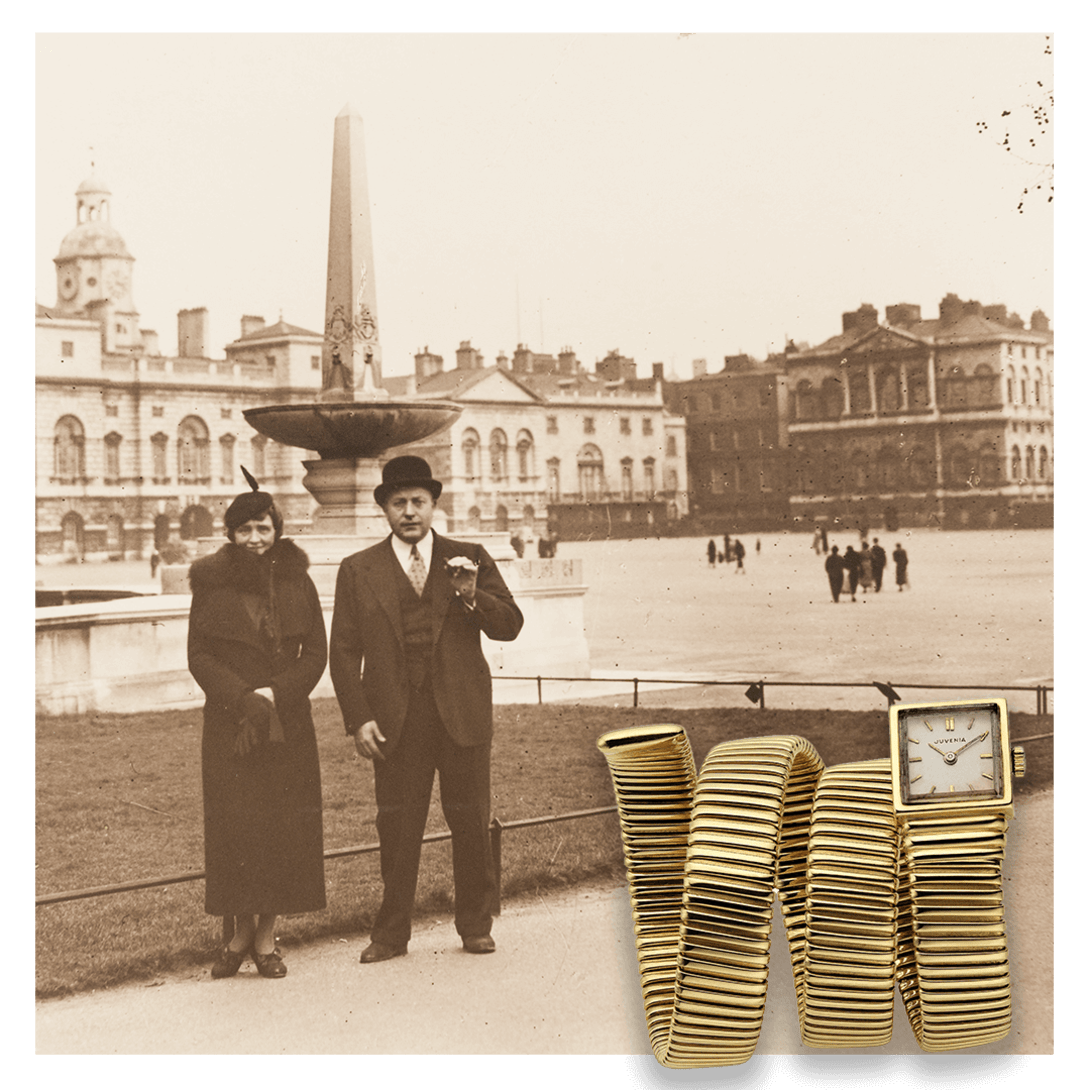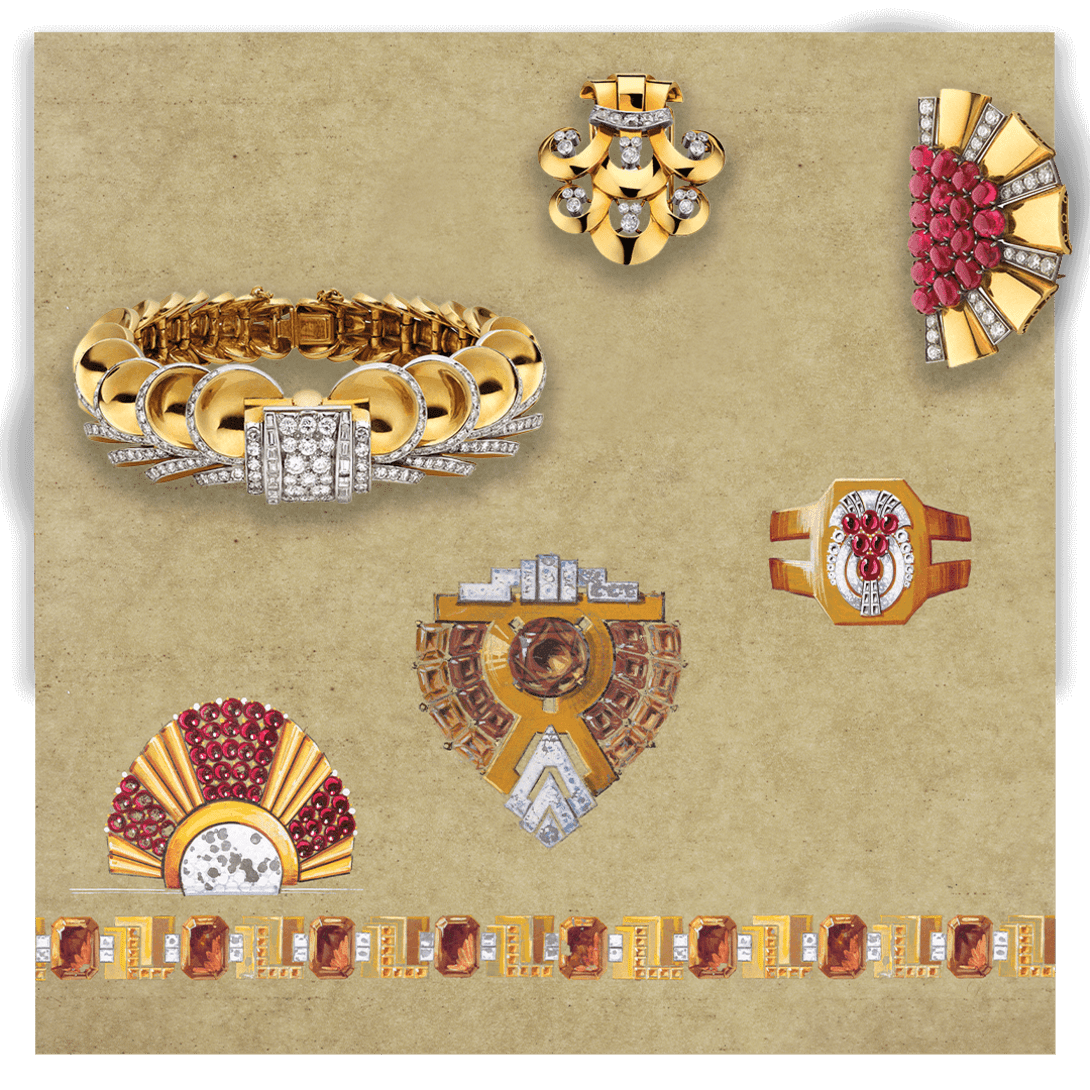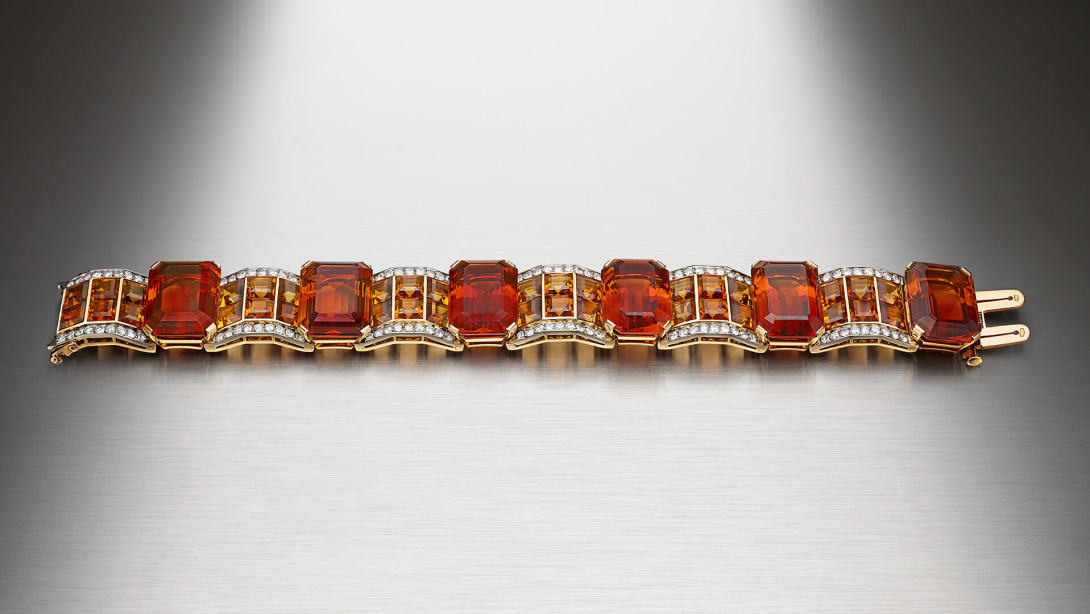


1940s: Birth of an icon
The outbreak of the Second World War imposed constraints on Bvlgari's production and supplies. Working with these limitations, Bvlgari embraced the warm hues of yellow gold to replace diamond-encrusted platinum. Despite these constraints, there was still room for creativity as the Maison experimented with new, softer, sinuous shapes, often drawing inspiration from the natural world.
Indeed, the 1940s ended up marking a significant period in Bvlgari's history with the introduction of its first iconic creation: Serpenti. Introduced in 1948, the first Serpenti bracelet-watches combined the spiraled band, crafted using the Tubogas technique, with a geometric watch dial, symbolizing Bvlgari's ingenious blending of design prowess and artisanal ingenuity.



Costantino Bulgari and Laura Gulienetti, London 1936. Bvlgari Historical Archives



Costantino Bulgari and Laura Gulienetti, London 1936. Bvlgari Historical Archives



Inspired by the corrugated tubes used in the industrial era, the Tubogas technique involved wrapping gold strips around a core to create flexible, rounded bands without soldering. The expertise required to achieve the even tension in these bands was the result of years of practice by highly skilled craftsmen, reflecting Bvlgari's dedication to excellence.



This fusion of industrial progress with the language of jewelry set a new paradigm, perfectly encapsulating the post-war era's spirit of renewal and hope. The all-day wear appeal and functionality of these early Serpenti creations resonated deeply in the years that followed the global conflict, striking a balance between understated elegance and practicality as women in particular returned to social life.



Giorgio Leonida Bulgari with her niece Anna, Rome 1948. Bvlgari Historical Archives



Giorgio Leonida Bulgari with her niece Anna, Rome 1948. Bvlgari Historical Archives



